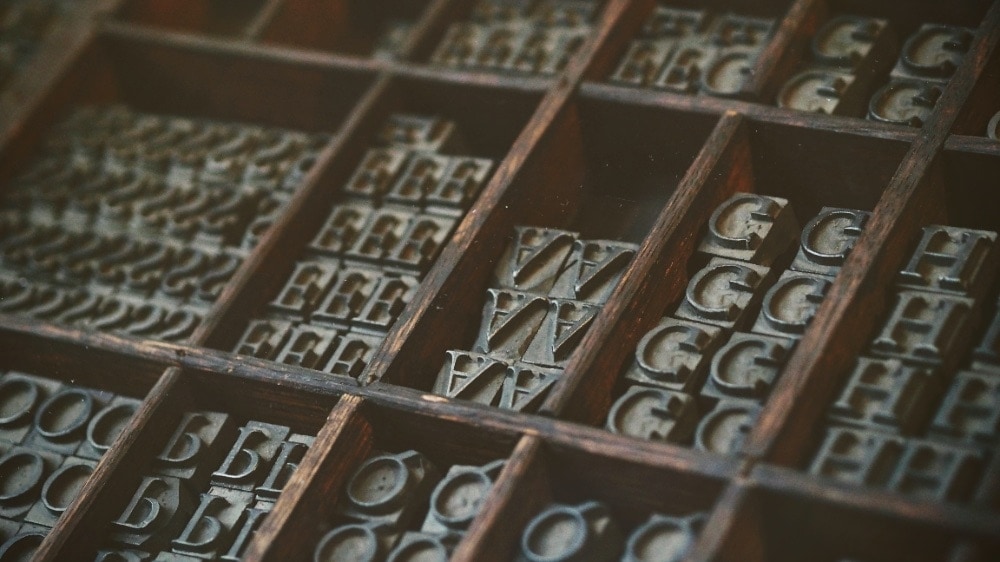When it comes to your business website, not just any old website font will do. Typography, the way the words appear on a screen, can add to or detract from your message.
Ideally, you want a website font that evokes the right emotions, solidifies your branding, and adds to your user’s website experience. The right font pick will do just that. The wrong pick could cost you traffic, leads — or even sales, if it’s a bad enough choice.
Knowing this, most businesses want to make sure they pick “one of the good fonts.” But there’s a catch. One company’s “bad” font pick could be another company’s “great” font pick. It simply depends on the situation.
To choose the best font for your business website, you need to pick a font that will help communicate your brand self-image and attract your key target demographic. Here’s how to do it.
Font Psychology
In the same way, you’d be slow to trust a salesman whose voice sounds insecure, bored, or hostile, an inappropriate web font comes off as unappealing to web users. A salesman who sounds confident, engaging, and positive-minded is going to do a lot better on the phones.
This has to do with psychology. Something feels “off” when good news is delivered with a frown, or bad news is delivered with a smile, because communication is more than just words.
It’s the same idea with typography. Fonts communicate subconscious messaging to your audience about who you are and what you do. The right font will match what you do and who you are as well as your reader’s expectations of what you do and who you are.
Some fonts are more respectable or elegant, while other are whimsical or humorous. These are all valid brand personalities, but no one wants a whimsical investment bank or an elegant cat litter company.
A font personality has to match your brand’s personality.
The Psychology Behind Five Popular Font Types
There are thousands of fonts, but you can begin sorting through your choices by looking at five distinct types of fonts: serif, sans serif, modern, script, and display fonts. Start thinking about which of these font types have feelings or associations that match well with your brand. Here’s a big-picture summary of fonts as Crazy Egg defines it and insight into what fonts might be right for your line of business:
Serif Fonts
Serif fonts have small decorative lines attached to the end of certain letter strokes. Times New Roman is probably the most famous example. Serif fonts like Times New Roman, Trajan, and Baskerville can give readers a sense that the text they are reading and the message that text is conveying is respectable, reliable, and traditional. Italic variations of serif fonts like Georgia Italic may give readers a sense of comfort. Serif fonts have a wide application by businesses in finance, real estate, insurance, academia, the sciences, and other industries were respectability, trust, and tradition are important.
Sans Serif
Sans serif fonts are those without the decorative serif stroke. Helvetica is probably one of the most famous examples of a sans serif font. Sans serif fonts like Helvetica, Franklin Gothic, Calibri, and Myriad Italic can give readers a sense that your brand and messaging is clean, objective, stable, and modern. Sans serif fonts are also widely used by businesses, particularly those in technology, electronics, automotive, travel, and other B2C products and services industries where modern, clean aesthetics are valued.
Modern Fonts
However, there are also some fonts that are even hipper: the modern fonts. These fonts, like Futura, ITC Avant Garde, Century Gothic, and Didot Italic, give readers a sense that a company and its copywriting is strong, progressive, chic, and stylish. Modern fonts are often used in creative fields, fashion, architecture, and luxury brand industries.
Script Fonts
Another group of fonts to consider are the script fonts. These cursive-like fonts include Edwardian Script, Bickham Script, and Lavanderia. These fonts can be very useful if your brand is trying to communicate elegance, creativity, or affectionate feelings. However, less is more when it comes to script fonts. They are best suited to headings and taglines of a few words at most, and you would then use a less busy font for larger blocks of text for improved readability. Script fonts are often used by businesses in industries such as womenswear, maternity and children’s retail, candies and chocolates, restaurants, hotels, and so forth.
Display Fonts
Another group of fonts to consider are display fonts, like Cooper, Giddyup, Valencia, and Space Age. These fonts can be quite different from one another, but they group because they give readers a sense of a piece of writing being friendly, expressive, amusing, or unique. Like script fonts, display fonts work best in small doses and for short spans of type, with other more standard typefaces being used for large blocks of text. Given their unique character, display fonts tend to have a more limited use and are often found in niche industries like craft brewing, art and design, science fiction publishing, and so on.
Responsive Fonts
As you begin to narrow down your website font pick, don’t forget about more practical matters. Like the fact your website font has to be mobile-friendly so that it can be read easily on any size screen. Positive psychological associations matter little if the layout of your content makes any font you choose unreadable on smaller screens.
The good news is that responsive typography isn’t something for your business to figure out on your own. Your web designer, web developer, or agency should do all the heavy lifting here. The main thing is to ensure that the professionals building your website are building you a mobile-friendly site with responsive fonts.
You can get a good idea of how your site typography will work on mobile by looking at the designer’s or agency’s previous work on a mobile device. In short, headlines, taglines, and small print should all look good and be readable even on a small screen. As design expert Zell Liew notes, some responsive font problems to look out for include:
- Having to squint to be able to read it.
- Noticing large letterforms more than the words they make up.
- Having the urge to zoom in or out for a better view.
- Being able to see only a few giant words on the screen without scrolling.
- Feeling the text is too dense or overwhelming.
- Reading the wrong line accidentally.
- Or getting distracted by big areas of white space between lines of text.
No matter what style font you pick, you want to make sure it’s readable on all screen sizes, from desktop, to tablet, to mobile. Even if your current users are predominantly desktop users, that could change before you do your next website redesign, and Google’s mobile-friendly algorithm is beginning to punish websites with lower search result rankings that aren’t doing enough to be mobile-friendly.
Getting Creative
While serif and even sans serif fonts are timeless, and responsive typography is a must, fonts do have trends, like all design elements. For some businesses, it might be worthwhile to explore some of the latest font trends when making your pick for some of your website typography. For that reason, it’s worth taking a look at some of the latest trends cited by 99designs that might work for your business.
Primarily, we’re talking about display fonts here — those that would be used for titles, logos, headlines, and other short spans of cornerstone copywriting. You’d use a less showy font for long paragraphs.
Handwritten Fonts
One interesting trend is handwritten and hand-lettered fonts. These fonts are very casual and always unique. They can be well-suited to crafty or homemade businesses and are pretty adaptable. Depending on the shape and stroke of the lettering, they can be either feminine or masculine.
Vintage Slab and Script Fonts
In a similar vein, vintage slab and script fonts are finding use for a wide variety of bespoke or artisanal businesses. Artisanal foods, herbal supplements, barber shops, coffee shops, and more are using these types of fonts to give a classic appeal while remaining practical for web usage.
Geometric Fonts
Geometric fonts are often used for logos and branding. The shapes are clean, crisp and very distinct. They’re often very modern and futuristic-looking fonts, meaning they work well for brands in the science, technology, or engineering industries.
Mid-Century Fonts
Mid-century designs remain popular these days, with many brands experimenting with mid-century font designs. One theory is that the current generation tends to prefer the style trends of their grandparents and reject the style trends of their parents. Whatever the reason for their popularity, mid-century fonts are finding favor with businesses in the vintage goods, food and beverage, arts, and travel industries.
Conclusion
Whether travel, technology, finance, or the food industry, there’s a great website font for every business. However, it’s important to keep in mind what fonts will work for your industry and your particular brand within your industry.
Remember the end goal for your font choice — you want to have typography that solidifies your brand’s self-image, gives the feeling to your brand’s messaging, and attracts your key customer demographic. Keep in mind the usages of different fonts, and you’ll end up with a great font pick.
See how Kaleidico can help you build the website you want, at the price you want. Give us a call at 313-338-9515 or email hello@kaleidico.com to learn how our full-service digital agency can help with all your website needs.

